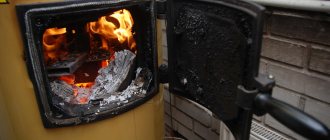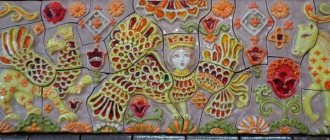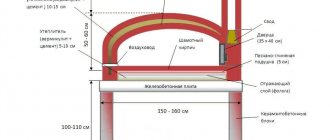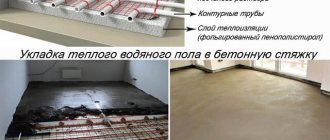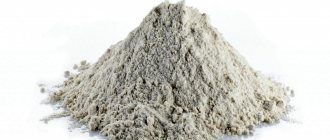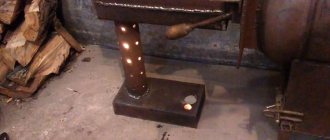To find out how to correctly spell “kolyat” or “prick” (firewood, injections, etc.), we will determine the part of speech and use the algorithm for writing unstressed personal endings of verbs.
The word “prick” is correctly written with the letter “yu” in the unstressed personal ending as a form of the verb “prick” of the first conjugation.
The word we are interested in is pronounced with a stressed vowel at the root:
- Morphemic composition: kolyut - root/ending.
For this reason, the unstressed vowel ending is not clearly heard. To choose the correct spelling, we first determine which part of speech this word belongs to.
The second stage is the process of direct splitting
When chopping wood, you should always remember safety rules, as one slight mistake can lead to dire consequences. If you are new to this business, then do not rush, work calmly and measuredly, in a word - get better at it. It's better to start with small decks. When aiming to hit, you must first of all pay attention to the cut, or rather to the cracks in it, if they are there, and try to hit there.

But what to do if there are knots on the deck, then you need to know one secret: the deck needs to be placed so that the intended split line does not touch the knots, then it will be easier to split the log.
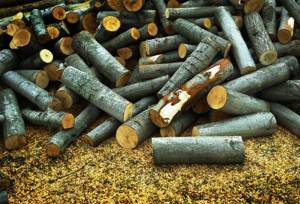

How to choose and install a profile for aluminum steps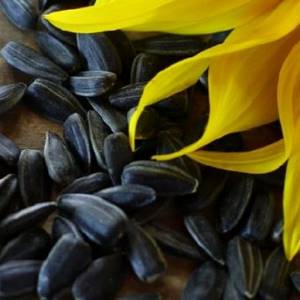
Sunflower seeds
- Brawl Stars toys
But if you hit the deck wherever you have to, there will be no result. So, you will only get tired and waste your time. Also, to make this process not so long and energy-consuming, you can use special devices. They will be discussed below.
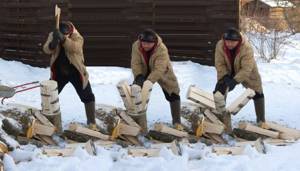
How to write correctly: pricks or colitis, pricks or pricks?
prick or prick, etc. Why? Options, rule. Is it stabbing or stabbing wood, stabbing or stabbing in the side?
In unstressed proper endings of verbs, the spelling E or I depends on the conjugation of the verb, which is established by the infinitive (unknown form). The 2nd conjugation includes verbs ending in -IT + 11 exception verbs, - in our own endings we write -I, -Ya. All other verbs have 1 conjugation; in their own endings we write -E, -Yu. Now let’s determine which conjugation the verb “pricks” belongs to. Kole/it (what does it do?) - (what to do?) prick. The infinitive ends in -OTT, this is not an exception verb, conclusion is a verb of 1 conjugation. Thanks to this, the following spelling will be correct: pricks, pricks, pricks, pricks, pricks. A boy cracks nuts. Men chop wood.
In order to find out the conjugation of the verb, and then correctly write the vowel at the end (E or I), we put the verb in an unknown form: prick, in other words, this is a verb in OT and it belongs to the first conjugation. This means we remember our completions of verbs of the first conjugation (and also of the second conjugation): Therefore, the forms of the verb KOLOT will be as follows: you stab, he, she, it stabs, we stab, you stab, they stab. Father is chopping wood. Now pay attention, don’t confuse the verb “pricks” (what does it do?) with the noun “colitis” (what?) (inflammation of the colon). I have a stabbing pain in my side, but I was diagnosed with colitis.
To correctly write the personal form of the verb kolet or “k o lit”, we will use the exact method: 1) turn to the unknown form of the verb; 2) using it we determine the conjugation; 3) we will make a balanced choice in writing the unstressed personal ending of the verb. Let's start: kolt - the verb ends in -ot. This word, of course, is conjugated according to the first type, like similar words: grind (grind), weed (flight), fight (fights). Inject: I inject - we inject ; you inject - you inject , he injects - they inject . The brother is splitting wood chips to light a fire in the fireplace. I have a stabbing (impersonal verb) in my side.
What to do if there are no cracks in the deck?
The answer to this question is very simple - hit the center. If you are dealing with hard trees, then it is better to use an ax, this will increase your efficiency.

What to do if an ax gets stuck in a log?
You just need to take a wedge for chopping wood and, using blows, drive it next to the ax, this is the only way to free it. In order to finish what you started, you just need to carefully hit the crack that has formed near the wedge. But sometimes situations arise when the only way to remove an ax is with a saw.

Spelling of the word "prick"
To select the letter “yu” or “ya” in the unstressed ending of the verb form in question, we apply the following algorithm:
- determine the initial form of the verb (infinitive);
- by the final letter combination of an indefinite form (-at, -ot, -et, -it, etc.) we will find out the I or II conjugation;
- In accordance with the conjugation, we will choose the correct unstressed ending.
The initial form of the word “prick” is the verb “prick”.
Something began to pierce persistently in my temples.
Conjugation of the verb "to prick"
To find out the conjugation of the verb “to prick”, let’s pay attention to the final letter combination -ot. In Russian, verbs in the infinitive form ending in -ot change according to the first type of conjugation:
- inject
- grind
- weed
- fight
The verb “prick” belongs to the first conjugation. Let's see how it changes in persons and numbers in the present tense forms:
- 1 person I stab - we stab
- 2nd face you stab - you stab
- 3rd person he stabs - they stab
The word “stab” is a 3rd person plural form of the verb.

If the verb takes a reflexive form, then its conjugation does not change and the unstressed ending is written the same:
- the pebbles on the road are pricking;
- hard fibers prick;
- the ruffs prick.
To learn how to write the unstressed ending of a verb, let’s read example sentences.
What types of wood splitting devices are there?
- Firstly, if you want to save money, then you can build such a device, called a mechanical wood splitter, yourself.
- Secondly, the most popular and convenient device is the electric screw cola. This is a tabletop with a built-in steel cone with threads. This unit literally splits the deck into pieces. In this case, you don’t even have to make any special efforts.
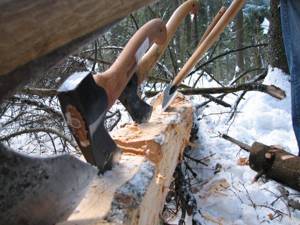
As a result, it should be noted that chopping wood by hand is not as easy as it seems.

To effectively cope with this task, you need to have certain knowledge and skills, without which chopping wood will turn into hard labor.

The main thing is to get good at it, and then it will be easier. But if you don’t want to waste your time and effort, then you can use a mechanical method of chopping wood. This method greatly simplifies the process itself. However, both methods require constant caution and compliance with safety regulations.
Conjugate
To conjugate is to change the persons and numbers of verbs in the present and future tense.
| Singular | In plural | |||
| 1st reference | 2nd reference | 1st reference | 2nd reference | |
| 1st person (I, we) | -у(-у) | -у(-у) | -eat | -them |
| 2nd person (you, you) | -eat | -hey | -yeah | -ite |
| 3rd person (he, she, it, they) | -et | -it | -ut(s) | -at(-yat) |
Now that we know that the verb “prick” has the first conjugation, we can inflect it:
- 1st person - I stab, we stab.
- 2nd person - you stab, you stab.
- 3rd person - he stabs, they stab.
Sequence of chopping wood with an ax
split firewood in a few steps:
- place the block on a surface, log or ground. The surface should be smooth, there should be no flaws or unnecessary things that could interfere;
- stand straight with your feet shoulder-width apart;
- the ax tightly with both hands , so that one hand is on the handle, and the other is closer to the blade. When a blow is struck, both hands should end up at the level of the handle, so the blow will be more accurate;
- Having carefully aimed at the point of impact, you can practice several times; you need to chop between knots and knots, it will be easier;
- raise the ax over your shoulder, the hand that was closest to the blade approaches it as much as possible;
- deliver a sharp and accurate blow, smoothly moving your hand from the blade to the handle, to the second hand.
If something is not clear, then it is better to take a closer look at the work of experienced people, if possible, ask someone to show how to chop wood correctly and safely.
How to write correctly: pricks or colitis, pricks or pricks?
prick or prick, etc.
Why? Options, rule.
Is it stabbing or stabbing wood, stabbing or stabbing in the side?
In unstressed proper endings of verbs, the spelling E or I depends on the conjugation of the verb, which is established by the infinitive (unknown form).
The 2nd conjugation includes verbs ending in -IT + 11 exception verbs, - in our own endings we write -I, -Ya.
All other verbs have 1 conjugation; in their own endings we write -E, -Yu.
Now let’s determine which conjugation the verb “pricks” belongs to.
Kole/it (what does it do?) - (what to do?) prick. The infinitive ends in -OTT, this is not an exception verb, conclusion is a verb of 1 conjugation.
Thanks to this, the following writing will be correct:
pricks, pricks, pricks, pricks, pricks.
A boy cracks nuts. Men chop wood.
In order to find out the conjugation of the verb, and then correctly write the vowel at the end (E or I), we put the verb in an unknown form: prick, in other words, this is a verb in OT and it belongs to the first conjugation. So we remember our completions of verbs of the first conjugation (and also of the second conjugation):
Therefore, the forms of the verb KOLOT will be as follows:
he, she, it stings,
Father is chopping wood.
Now pay attention, don’t confuse the verb “pricks” (what does it do?) with the noun “colitis” (what?) (inflammation of the colon).
I have a tingle in my side,
I was diagnosed with colitis.
Collet.
This is how the 3rd person singular form of the real tense verb “to prick” is written. In the unstressed position, “e” is written, because to prick is a verb of the 1st conjugation. In the case of the 2nd conjugation it would be “he colitis”. For example: “Natalya Anatolyevna pricks a tarpaulin with a sharp needle to check its reliability.
Colitis.
There is no such verb form. Why is written in the first paragraph. Colitis can only be a disease (noun). For example: “Pavlik has chronic colitis.”
You sting.
Also from “to prick”. 2nd person singular form. The first conjugation, thanks to which “e” is written at the end. For example: “Why are you chopping wood if there is enough for thirty years without it?”
Kolysh.
This form does not exist; a similar spelling would be erroneous.
Panterra000
Connect Knowledge Plus to access all answers. Fast, without advertising and interruptions!
Don't miss out on something important - connect Knowledge Plus to see the answer right now
Watch the video to access the answer.
Oh no! Reply views have ended
Connect Knowledge Plus to access all answers. Fast, without advertising and interruptions!
Don't miss out on something important - connect Knowledge Plus to see the answer right now
This is how to chop wood
How to chop wood in a car tire
How to chop wood? At first glance it is simple. Take an ax or a cleaver. You place a log on the deck (stump). Hit and done! The log fell in two. All that remains is to collect the logs from the ground and take them to the woodshed. Stop. Is this convenient? See how simply, quickly and conveniently splitting birch firewood in a tire is done by a FORUMHOUSE user with the nickname AndreyPYSH, and take this “folk” life hack into service.
The benefit of this method: the split logs do not fly apart, you do not have to bend down after each flying log, the load on the lower back is reduced.
AndreyPISH
Tires can be fastened to each other or, pull the bottom tire onto the deck, choosing the diameter. It is convenient to stab thick stumps in a tire.
OlegN FORUMHOUSE user
I saw this option for chopping wood a long time ago and also tried it. My recommendations:
- Buy a good axe. The bad one gets stuck in the log.
- The optimal height of the log is 1/3 sticking out of the tire.
- Try to split the log in one blow.
For stability and to make it higher, I placed the deck on a car rim.
You can pick up old tires for free from tire shops.

